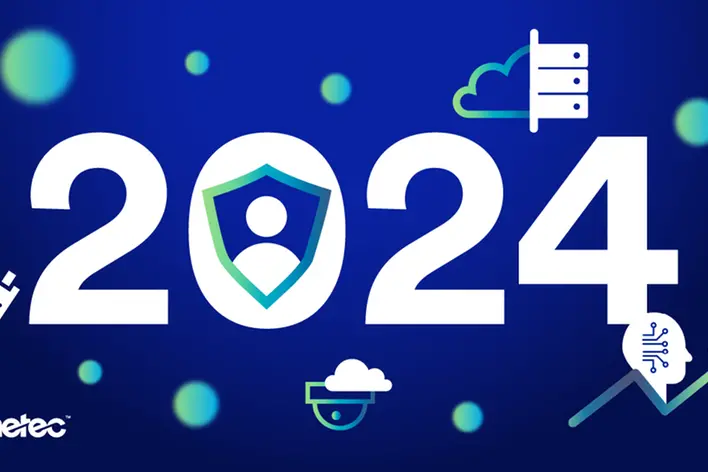
Genetec has shared its top predictions for the physical security industry in 2024.
IT and physical security teams will become more united
In the coming year, organizations will look to optimize collaboration between IT and physical security teams. Bridging these two valuable skill sets will result in more effective risk mitigation and data optimization across the business.
Physical security leaders are increasingly integrating IT expertise into their departments. Simultaneously, Security Operations (SecOps) are broadening their function to address physical security risks, leveraging data from both groups. More and more, IT will bring physical security within their group and begin overseeing physical security mandates.
The need for unified, cloud-connected physical security solutions will increase as cross-departmental collaboration expands. This unified and connected view will help teams get a complete picture of systems and changing threats while enabling them to use data more effectively.
Access control modernization will top tech investments
Modernizing access control will remain a top priority in 2024. To ease upgrade complexities, many organizations will shift to a hybrid-cloud model and deploy cloud-ready access control solutions. This will deliver continuous innovation and cybersecurity updates that reinforce security from doors to networks.
We’ll also see greater demand for open access control solutions. Businesses are increasingly looking for the flexibility to add and connect the best technologies available. This will include everything from building management systems and life and safety solutions to mobile credentials.
Many organizations will also reach a breaking point in managing separate video and access control systems. Striving for more efficiencies, leaders will take steps towards system unification. This will simplify system monitoring and maintenance tasks, leading to higher output and cost savings across the enterprise.
Hybrid-cloud adoption will rise
Over the next year, the physical security industry will see a large increase in hybrid-cloud adoption in medium and large enterprises. Recent research of over 5,500 physical security professionals conducted by Genetec found that 44% of organizations already have over a quarter of their physical security deployment in a cloud or hybrid-cloud environment. And 60% of organizations say they prefer hybrid-cloud as a long-term strategy.
As cloud adoption rises, there will be growing interest in new plug-and-play, cloud-ready appliances. They not only streamline access to cloud services but also enhance computing power at the edge.
We’ll also see more focus on cloud data usage and associated costs. Users will increasingly use cloud-managed appliances to store heavy data such as video. Organizations will seek the expertise of channel partners to explore use cases beyond security to maximize hybrid-cloud investments. This will create a lucrative opportunity for channel partners to focus their efforts on added-value services to help customers overcome new challenges, all while generating sustainable recurring business.
Growth of IIoT devices and associated data creates demand for analytics
The market is seeing a surge in the availability of physical security devices and Industrial Internet of Things (IIoT) sensors. Organizations across various industries are eagerly adopting these technologies, not only to increase the diversity of data in their security deployments but also to break down siloes between systems and retrieve valuable information.
Organizations that opt for an API-centric, open architecture, along with a unified approach will stand to gain the most over time. This will enable them to combine and analyze multiple data sources to help inform new strategies and maximize returns across all tech investments.
As the amount of available data continues to rise, many organizations will also look for ways to digitize and automate their workflows to support their operators. As a result, demand for physical security solutions with embedded analytics, automation tools, and visual dashboards will grow.
